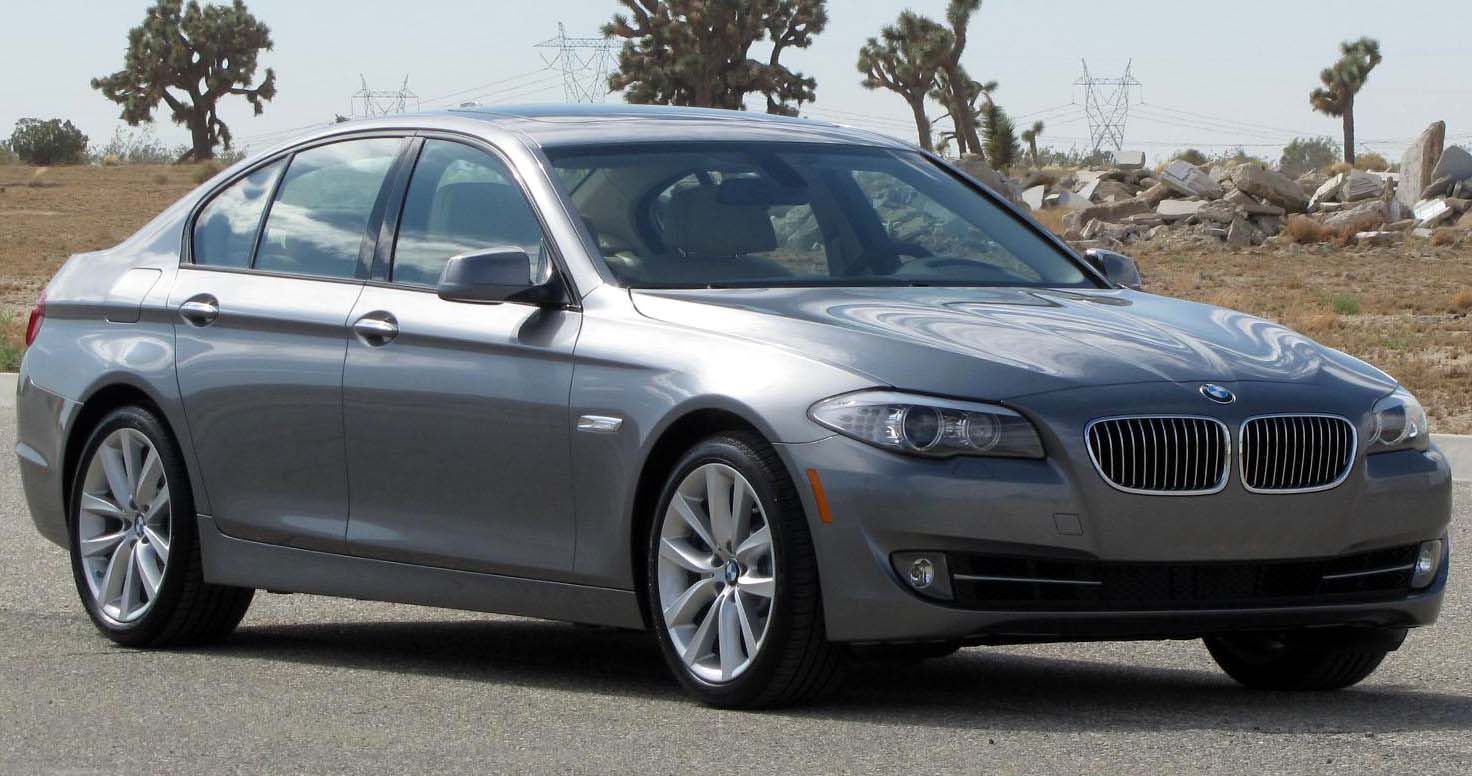The name S63B44T0 is derived as follows.
- 'S' stands for the M Motorsports division ('S' for Sports). It is the M-tuned version of the base engine used in the F10 550i.
- '63' is the base engine line designator. The base engine is the N63 first used in 2008 in the X6 and later in the 7-Series and 5-Series.
- The '6' is used to designate a V8 engine.
- The '3' indicates the engine technology (loosely!).
- 'B' stands for 'Benzin', German for 'Gasoline', meaning it is a gasoline powered engine (as opposed to diesel or electric, for instance).
- '44' is the displacement: 4.4L.
- 'T' stands for 'top', as in top performance class.
- '0' is the revision number.
It is also referred to as the S63Tü (for "technische überholung"), meaning that it is a "technical overhaul" relative to the first S63 used in the X5 M and X6 M. However, instead of just bumping the revision number of the S63B44O0, they moved the 'O' to the 'T' ('O' stands for 'Upper Output' and 'T' for 'Top Output'), indicating it really is a rather significant upgrade and not just a technical revision. This is certainly Albert Biermann, Head of M Engineering's, position when asked if this is a technical update to the S63 he answers "No, for me, it's a new engine" (see the video Alber Biermann, head of M Engineering explains the new M5, 2:23 in).
The developmental history of the engine is as follows.
The M60 from 1992 was used in the E34 5-Series. This engine was BMW's first V8 in over 25 years. It used aluminium and extensive computer-aided design to cut weight to make it suitable for a sporty European car. It had four valves per cylinder, used dual overhead camshafts, was fuel injected and had electronic spark ignition on each cylinder. In other words, a thoroughly modern engine.
The M62 from 1994 used in the E39 5-Series was as a quick replacement for the M60 because of that engine's use of Nikasil aluminium alloy for the cylinder linings which corroded badly when exposed to poor quality gasoline. It added variable valve timing on the intake camshaft.
The N62 from 2002 used in the E60 545i. It added variable timing on both intake and exhaust camshafts, variable valve lift on the intake negating the need for a throttle, and a variable length intake manifold.
The S63 from 2009 used in the X5M and X6M increased the turbo boost and otherwise beefed up the N63 engine to keep up with the added power. It also added more efficient turbo-chargers including a clever cross-bank exhaust manifold.
The developmental history of the engine is as follows.
M60
M62
The M62 from 1994 used in the E39 5-Series was as a quick replacement for the M60 because of that engine's use of Nikasil aluminium alloy for the cylinder linings which corroded badly when exposed to poor quality gasoline. It added variable valve timing on the intake camshaft.
N62
N63
The N63 from 2008 used in the F10 550i added turbo-charging and high-pressure direct fuel injection. It initially dropped the variable valve lift, but that was added back in a later technical update in 2011.
S63B44O0
S63B44T0
The S63B44T0 was released in 2011 specifically for the new F10 M5. The goal of the engine development relative to the S63 was to optimize the throttle responsiveness and add top-end power. They did this by adding back in variable valve lift and changing the entire fuel injection strategy as a result, increasing the size of the intercoolers, increasing turbo boost, freeing up intake and exhaust airflow, increasing the compression ratio, and increasing the redline to 7200 RPM. Notable technology features of this engine are as follows.
- V8
4 valves per cylinder, dual overhead camshafts - Dual Twin-Scroll Turbochargers
The intake air for each cylinder bank is pressurized by its own turbo before going into the engine. The tubochargers are each of the twin-scroll design, meaning that each one is powered by two independent streams of exhaust gasses for higher efficiency. - Cross-Bank Exhaust Manifold
The exhaust gasses from the two cylinder banks are crossed over to ensure a smoother delivery of exhaust pulses to the turbos, again for higher efficiency. - Intercooled
meaning that the air is cooled before entering the cylinders to allow it to more efficiently burn fuel (the compression by the turbo heats it). - Variable intake valve timing
BMW term is VANOS for VAriable NOckenwellen Steuerung = variable camshaft control.
The timing on the intake valves can be adjusted continuously and quickly under computer control for better power and efficiency. - Variable exhaust valve timing
BMW term is Double-VANOS
The timing on the exhaust valves can also be varied continuously under computer control. - Variable intake valve lift
BMW term is Valvetronic III.
How high the input valves lift is computer controlled. This eliminates the need for the throttle in most situations and therefore frees up the airflow, especially at lower RPMs, increasing efficiency. - Direct Injection
When combined with Valvetronic and Turbo charging, the BMW term is TVDI for "Turbocharged Valvetronic Direct Injection"
Fuel is injected directly into the cylinders as opposed to upstream of the intake valves.
We shall cover each of these items in detail in future blog posts.



_Executive_sedan_(2010-10-02)_01.jpg)



nice article, thanks
ReplyDelete